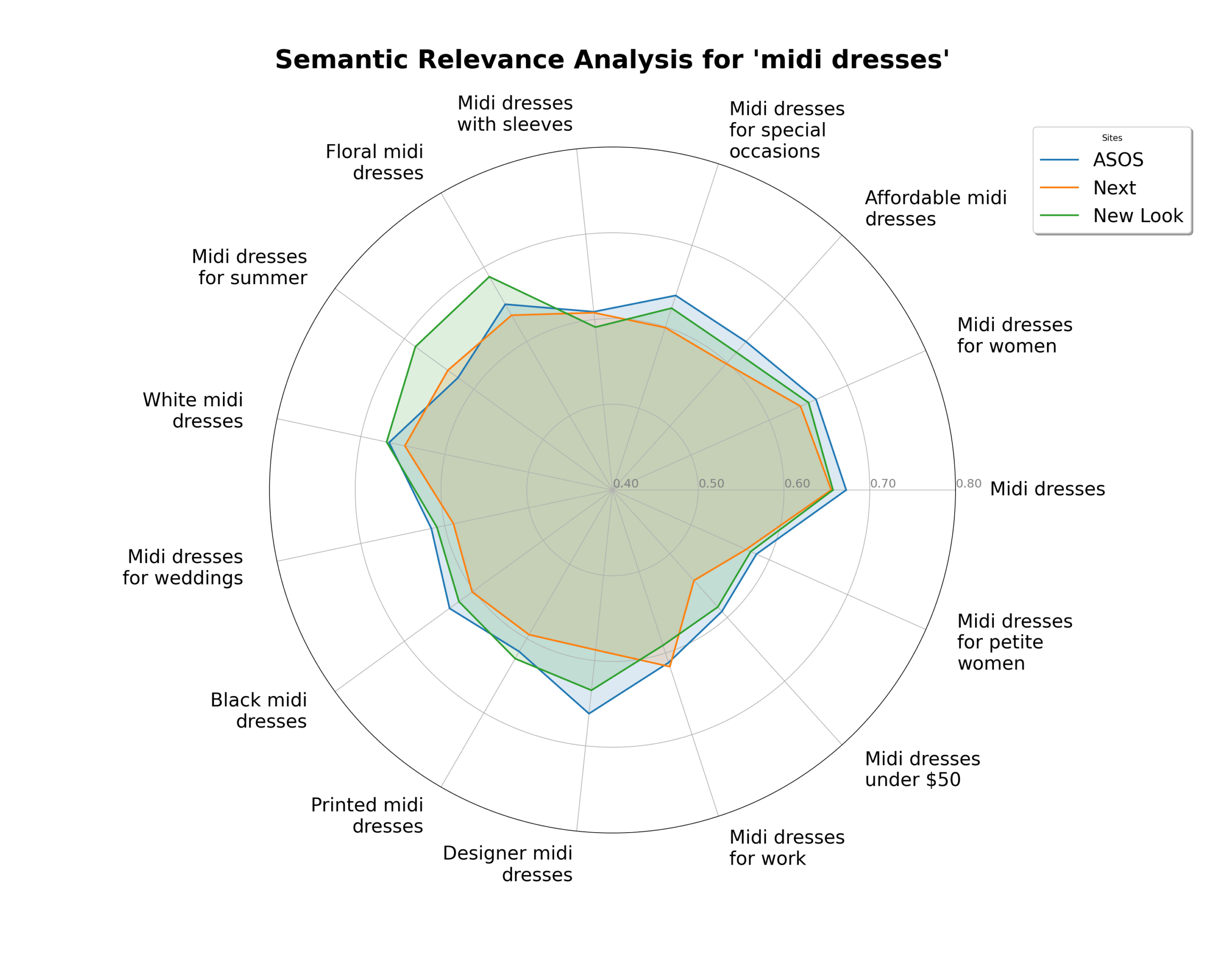
Semantic SEO
Semantic SEO
Semantic SEO is an approach to optimising for intent and topical relevance rather than just matching keywords.
Semantic SEO is important because it is a key signal of relevancy to traditional and AI Search engines. Over the years Google, the market leader, has matured from a link-based search engine to a highly relevant and soon to be super personalised search engine. We saw updates over the years from anti-spam, anti-misinformation, anti-link manipulation to helpful, trustworthy, authoritative and highly relevant content.
We are now in the era of Semantic SEO, where relevancy means topical authority and niche content wins. And let’s face it discovery of content has changed; we will talk about this more below. But first let’s break down how to optimise, what the key principles are and how you can analyse semantic relevancy.
5 Semantic SEO Principles
Semantic HTML
In HTML there are several semantic elements that can be used to define different parts of a web page, such as those seen below:
- <h1>
- <h2> – <h6>
- <article>
- <details>
- <footer>
- <header>
- <main>
- <nav>
- <section>
- <summary>
In short, semantic HTML is how you structure your page and what you put in those sections.
An example of no semantic HTML would be to have your content wrapped in only <div> and <p> HTML, no heading HTML tags or specific semantic HTML Tags.
With Semantic HTML
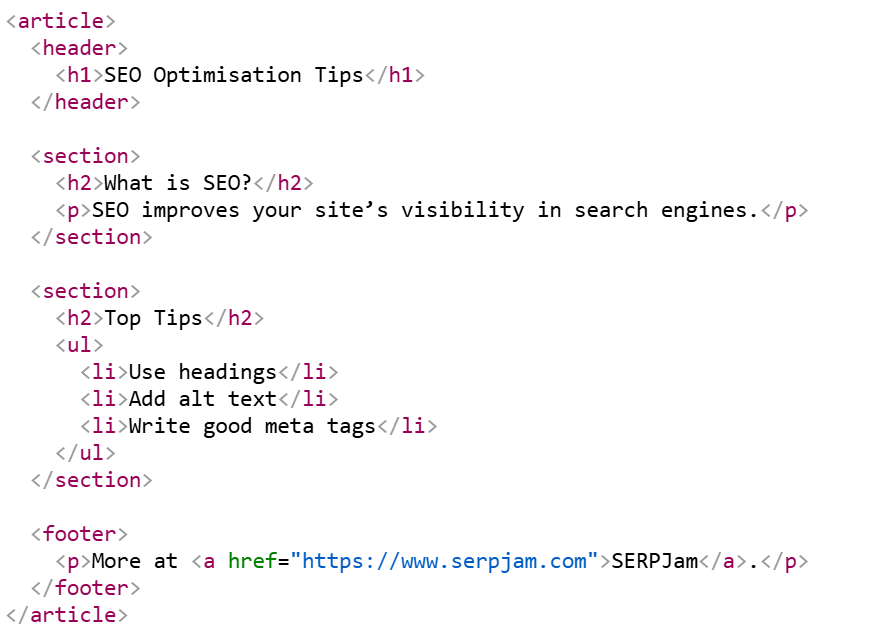
Without Semantic HTML
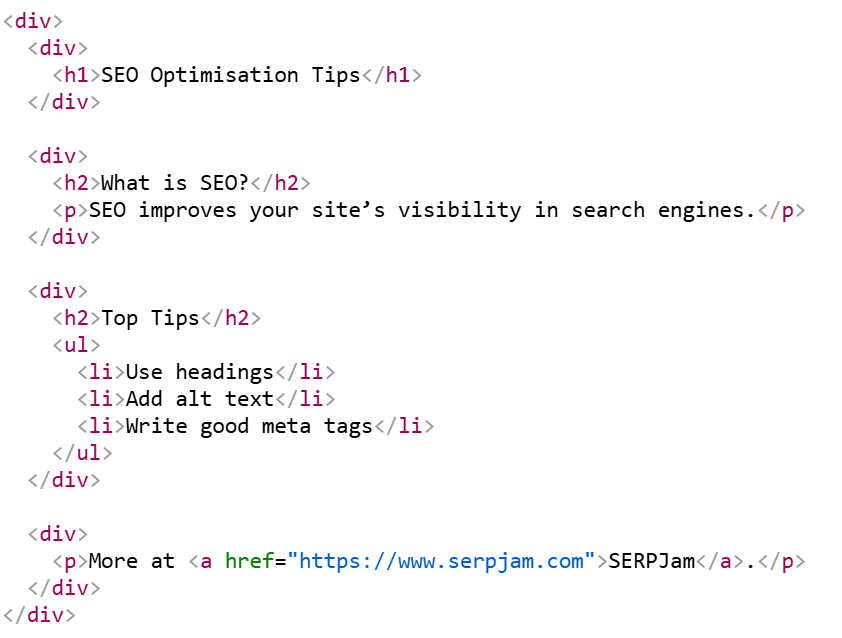
It is recommended to use an SEO testing tool and test structure changes to see how much impact they have on traffic and positions because it is easy to dynamically scale.
Beyond the specific tag mark-up, additional semantics in HTML can include:
- Structured Data / Schema
- Content Features
Schema
Schema is placed within the HTML to give search engines more context on what the page is about. View schemas that might be relevant to your business and online there is a free schema markup validation tools to test your schema before raising with developers.
Content Features
Adding and testing content features is another way to improve semantics, this can involve structuring content in lists, tables and visual forms of content such as videos. These features not only are likely to improve engagement and scan ability, but can be snippet or AI overview friendly too and are a great way to maximise the opportunity to be featured in these results.
Ways to optimise or test HTML Semantics
- Have a structured header, body and footer with most important content in the body.
- Include/Test Main and Section Tags.
- Test changing <div> and other HTML headings to heading tags such as <h2>.
- Add schemas to your webpages that are appropriate to your business or/and industry.
- Add and test structured features.
Semantic Keywords
Latent semantic indexing (LSI) keywords are words or phrases conceptually related to a target keyword. Latent semantic indexing, also known as latent semantic analysis, is a mathematical practice that helps classify and retrieve information on context and related terms. Therefore, the practice of including related terms into content is to optimise for stronger relevancy.
LSI keywords are basically semantic keywords and these can be phrase match, related or question-based terms. It is recommended to include all 3 where relevant, especially if you want to optimise for AI search engines as these look at texts in comparison to queries/prompts to score and return results.
Below is an example of semantic keywords from our AI semantic keywords builder.
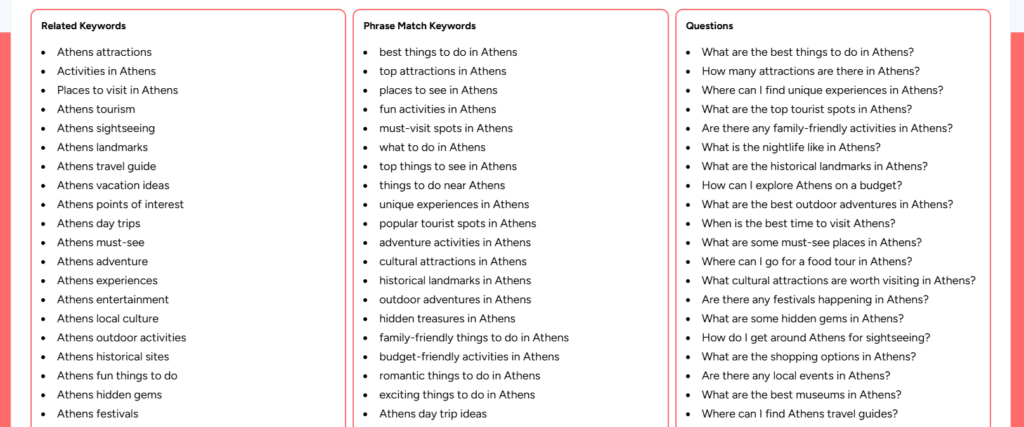
Gather semantic keywords from:
- A keyword research tool to view terms and search volumes (Ensures you optimise for demand).
- AI search engines or AI search engine keyword tools.
- People also ask Google features.
- Reddit.
From this you can build out high quality, contextual and intent relevant sections/paragraphs and improve the structure of your content.
Content Clustering and Topical Authority
Content clustering and topic modelling is one of the hot topics of SEO in 2025. This is the approach of creating multiple variations of content on a topic from different subtopic and intent perspectives. This is often not just to drive traffic and excitement around a topic, but also to enhance the main topics keyword positions through targeted internal linking.
For example, if you’re optimising for the midi dresses category page, you might create a clustering content strategy that involves creating multiple How to wear articles for different midi dress styles, how to style during different seasons and the top trending styles for the current year.
Then from this strategically link to the midi dresses pge and any other closely related articles and subcategories.
Our toolkit has two tools that can help support topic ideation and strategy. These are the Content Cluster Planner and Topical Content Builder.
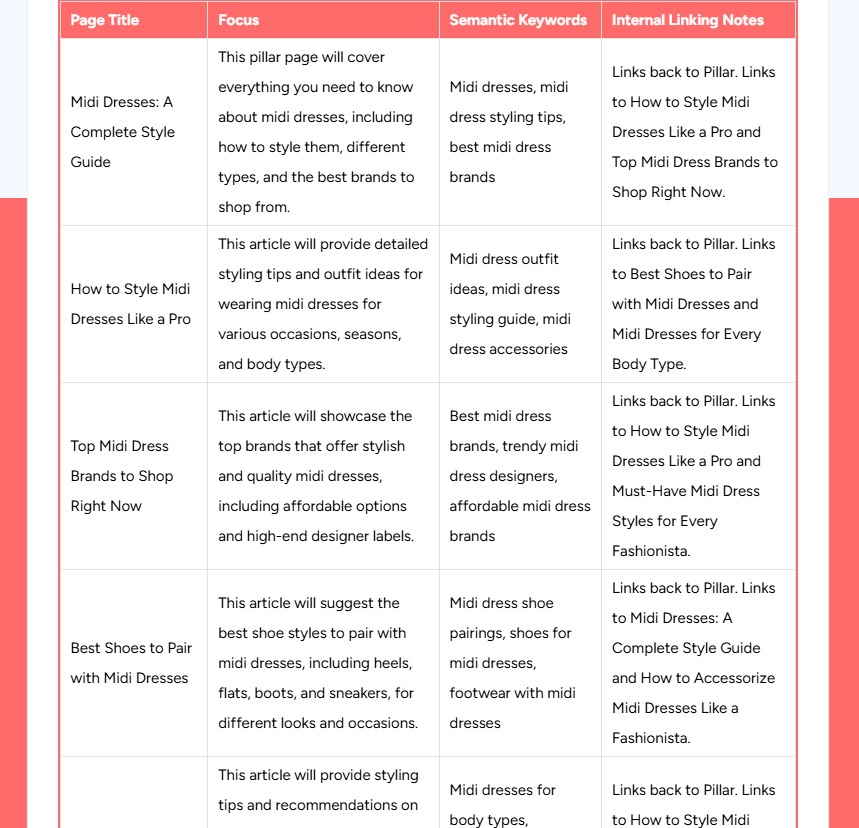
Internal Linking and Discovery
Internal linking gives search engines signals:
- The anchor text used in internal links gives Google context about what the linked page is about.
- It helps reinforce semantic relationships between related content.
- Internal links guide crawlers through your site, ensuring deep pages are discovered.
- A well-linked site keeps users engaged and lowers bounce rates.
- Google may interpret this as a positive behavioural signal.
- Internal links pass link equity (PageRank) across your website.
- Strategically linking to core and high-value pages can boost their ability to rank.
- Google can find and index new content faster when it’s internally linked from existing pages.
Previously this has been a popular strategy for many SEOs on site, but these signals are moving increasingly off the website too. Some professionals are calling it ‘category signals’.
Just as we start moving into a hyper semantic and personalised era of search, search engines are expanding their results. Social search engines are now regularly crawled, with social content like Tiktok videos, Youtube videos, Instagram and Pinterest images indexed by traditional search engines. There is no doubt that AI Search engines will closely follow. With the rise of more social search engines, discovery and search behaviour has changed. Semantic SEO strategy needs to be multi-channel as SEO is becoming a multi-channel discipline.
This means creating targeted content clustering across social media platforms and other industry related partners. Think targeted links from Pinterest to categories and trending type PR articles to categories.
Semantic SEO is no longer just about ranking on Google. It’s about structuring your content to be understood by any AI or search system, from Google to ChatGPT, Bing, TikTok, voice assistants and beyond. SEOs now need to optimise not just for keywords but for meaning, intent and discoverability across every platform.
Search Intent alignment
Optimising for search intent is about answering the why behind the search. Understanding user intent is important for relevancy and conversion. Does the user want to compare, learn, buy or solve a problem?
In most keyword research tools intent is segmented into 4 types:
- Informational – Learn
- Navigational – Find
- Transactional – Purchase
- Commercial – Compare
Understanding intent will help improve relevancy as you’ll understand the why and be able to craft content aligned to the why. That could look like a snippet friendly, concise answer for an informational term or a comparison pricing table for a commercial term.
Semantic SEO Analysis
Semantic SEO analysis is about looking for gaps and often involves comparing against competitors.
Keyword Density Analysis VS Competitors
Analysing keyword density vs competitors can give an insight into where there might be underuse, or overuse in keywords against competitors.
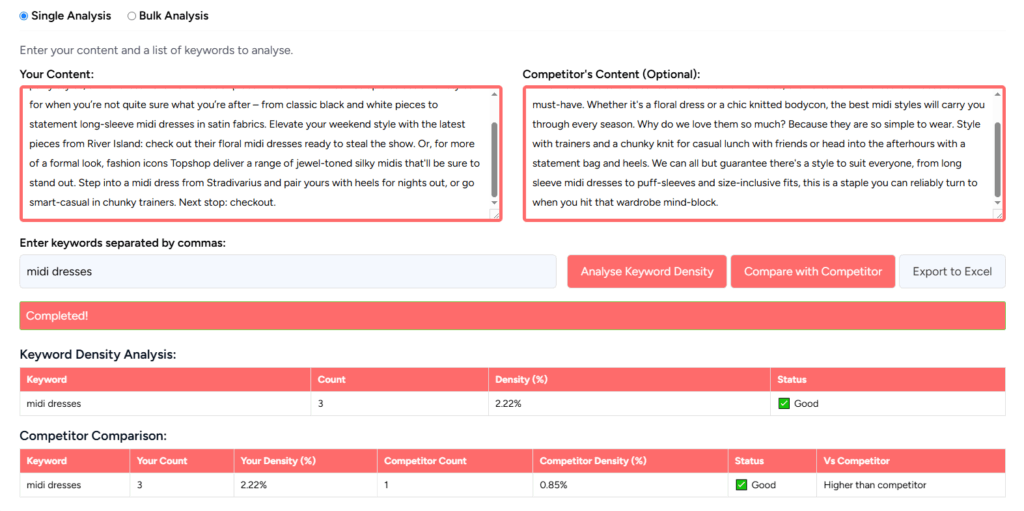
Entity Analysis and Optimisation
Entities (like brands, people, locations, concepts) are how search engines understand real world meaning and the semantic relationships between them. Entity analysis involves looking at entities within content and comparing them with competitors. This provides the opportunity to find gaps and test including new entities in content.
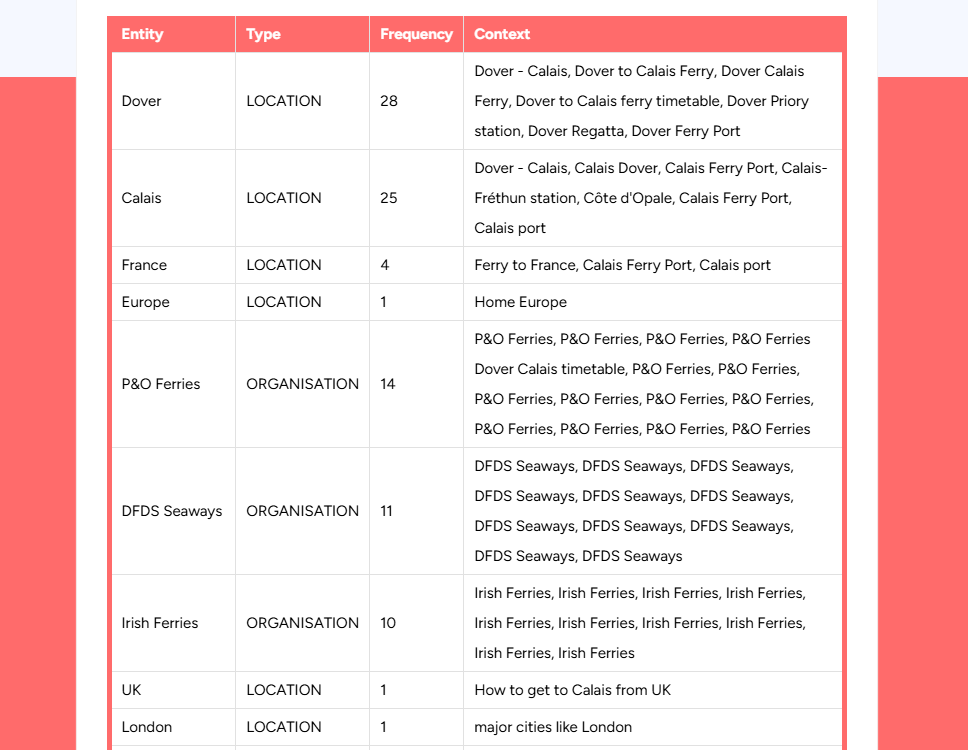
N-gram Analysis
N-gram analysis breaks down content into word groups which include unigrams (1 word), bigrams (2 words) and trigrams (3 words). This allows for the analysis of frequent word phrases and gaps in semantic words used vs competitors. This can open up a range of ideas for SEO testing.
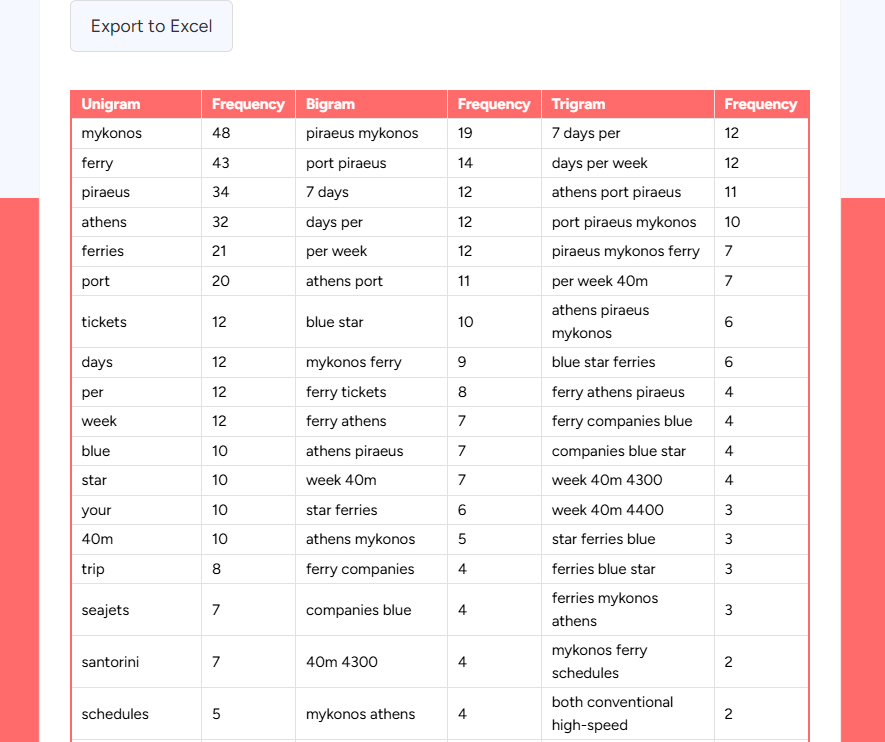
Vector Embedding Analysis
Vector embedding analysis transforms your content into numerical representations (embeddings) that capture its meaning. These embeddings allow you to measure semantic similarity between your content and user queries, revealing how topically aligned your content is at a deeper level. The analysis returns semantic relevancy scores which can reveal if more semantically related terms and content are needed to improve the relevancy scores.
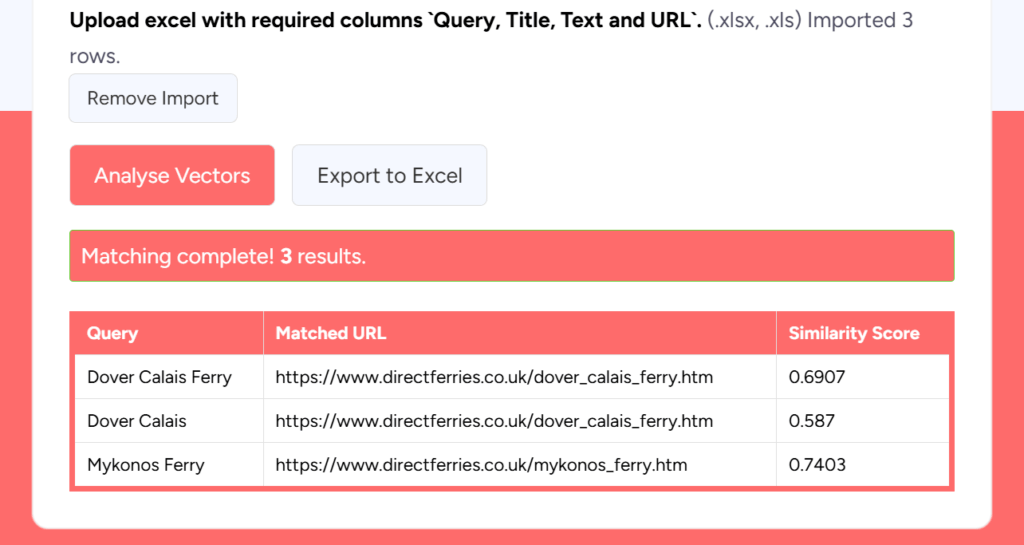
Query Fan Analysis
Query fan analysis identifies the range of related search queries that stem from a core keyword. By mapping out the “fan” of semantically connected questions and phrases, you can understand how users naturally explore a topic. This analysis helps reveal content gaps and find long-tail opportunities when comparing with competitors.
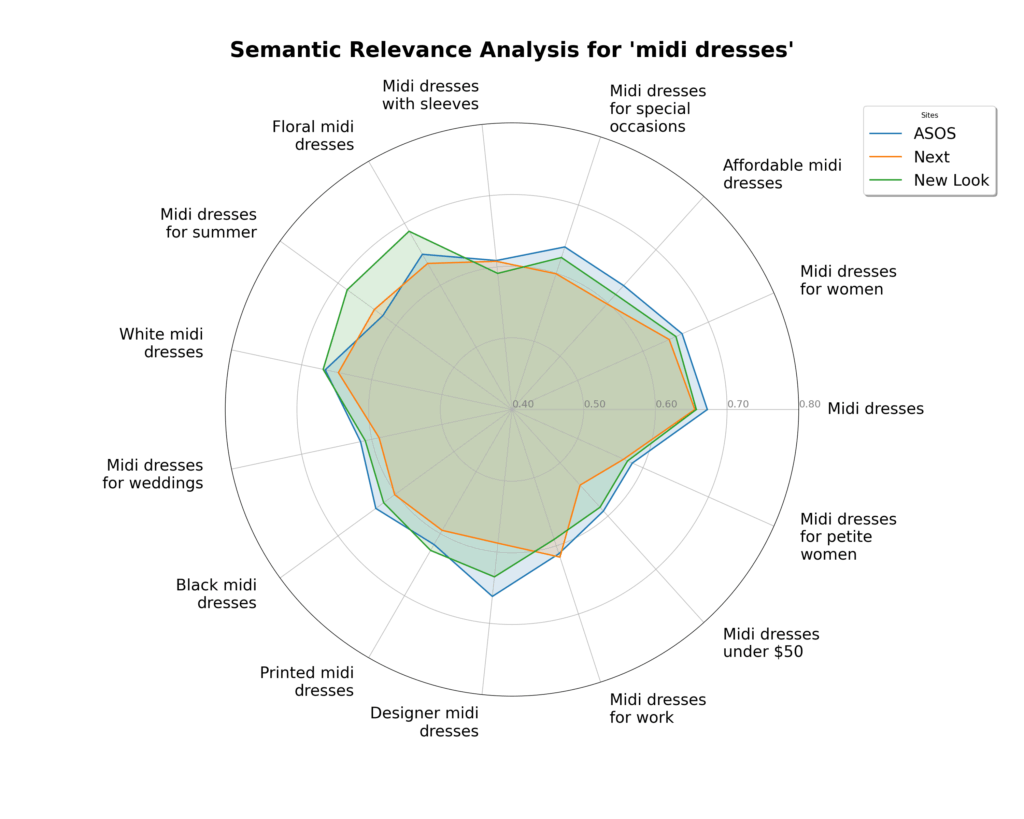
By applying these semantic principles and analysis techniques, you can plan and execute SEO strategies that align with the demands of new search changes and AI-driven search.
Use the final checklist below as a reference point when creating content to ensure it is semantically rich, user-focused and optimised for modern search engines.
Semantic SEO Checklist
- Use active voice rather than passive voice.
- Paragraphs should be segmented around subtopic intent or question-level intent to improve reader scanning and contextual focus.
- Apply keywords naturally, without stuffing.
- Include related phrases, synonyms and question keywords to build topical depth and improve semantic coverage.
- Think more like a UX designer, what makes sense to the user? Prioritise clarity, flow and usefulness. Add user-friendly features like summaries, tables or visual aids where relevant.
- Provide concise answers, especially for questions. These are more likely to be pulled into featured snippets and AI summaries.
- Don’t use unnecessary words. Readability and simplicity are key. Avoid analogies, jargon, idioms, abbreviations, complex words unless necessary.
- Internally link to your primary topic pillar and other closely related subtopics to build topical clusters.
- If you cite external websites, make sure they are trustworthy and authoritative.
- Optimise headings (H2/H3) using question formats or long-tail variations of keywords.
- Use schema markup where possible to help search engines understand your content’s structure and purpose.
- Address search intent early, ideally within the first 100 words should reflect the user’s query.
- Research and include FAQs that naturally match common user questions about the topic to capture more long-tail and voice search queries.
- Write more niche content. We are in the era where niche wins. Focus on specific subtopics and build topic clusters around them. This approach outperforms outdated keyword stuffing and signals topical authority.
- Think beyond other related pages on your website and build content around a targeted topic on and off site, such as on social media discovery channels and partnering with industry experts.

